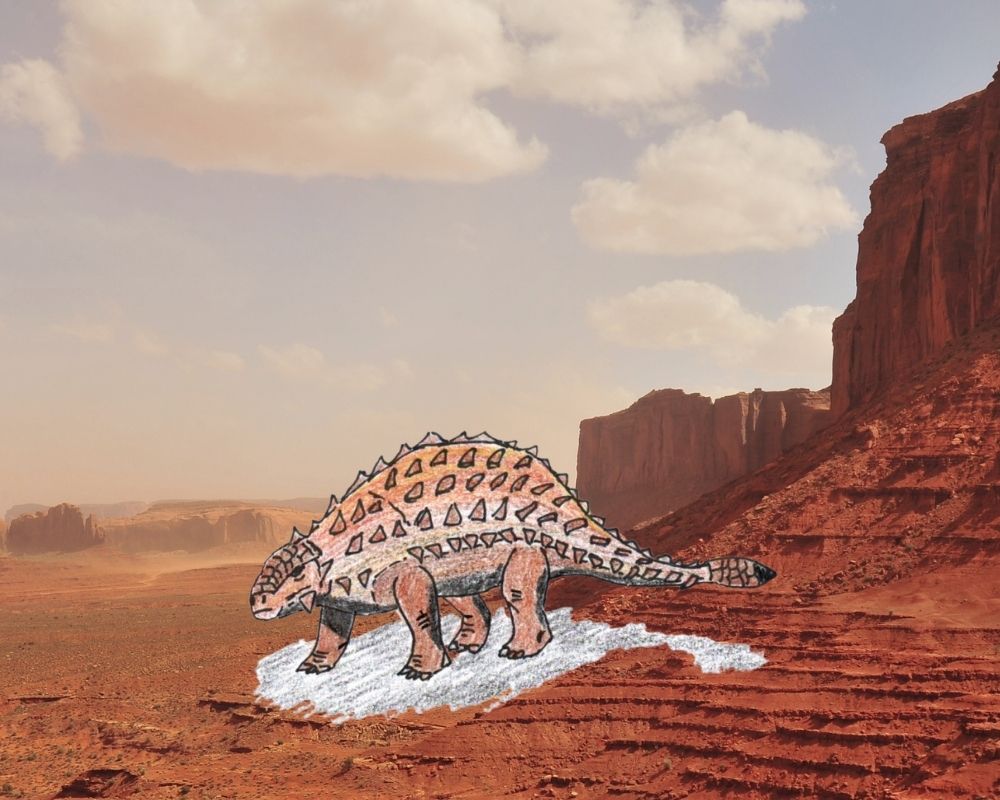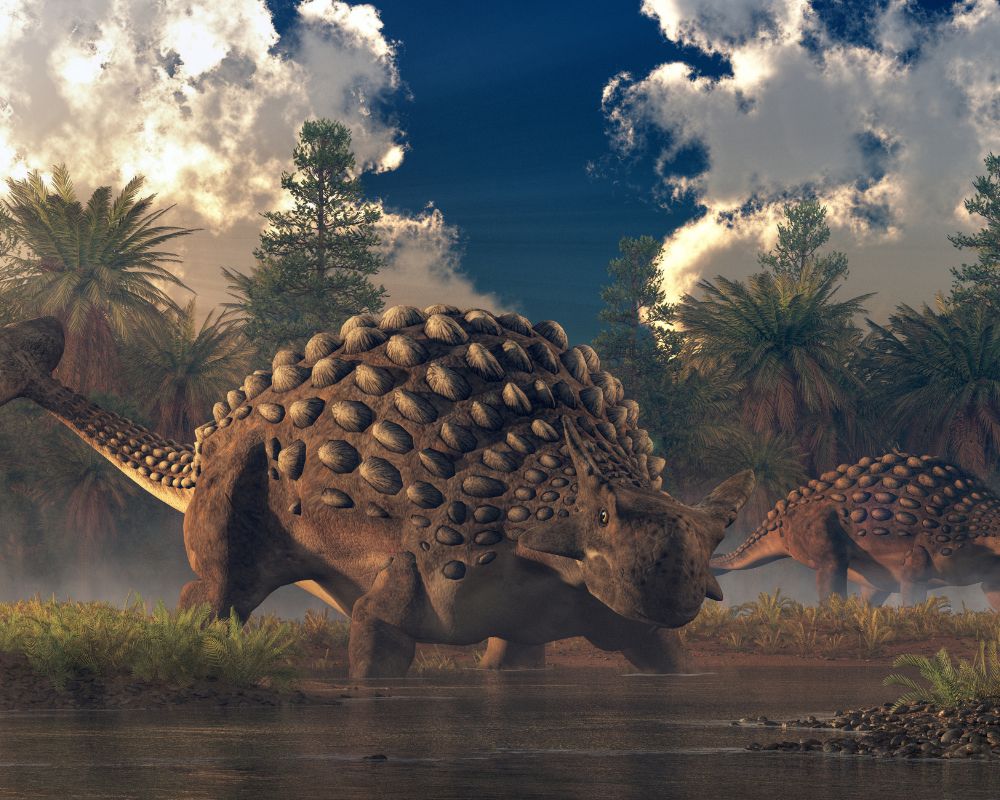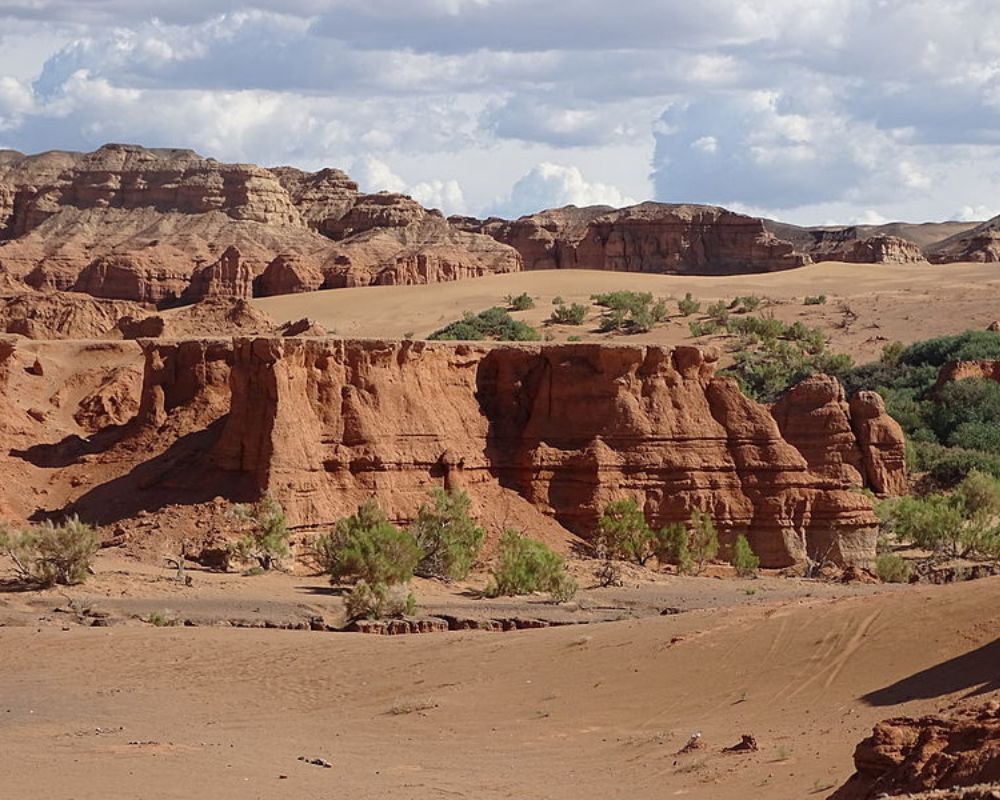The Saichania was a late Cretaceous dinosaur living in Mongolia's hot desert regions. As an herbivore, it roamed the hot desert regions looking for vegetation to eat. With spiked armor, a club-like tail, and a hard shell, it had plenty of protection against predators like the T-Rex. It had short, stout legs and weighed a whopping 4,400 pounds.
Table of Contents
Some Quick Facts about the Saichania

| Name | Saichania (beautiful one) |
| Type of dinosaur | Ankylosaur |
| Territory | Deserts, Mongolia |
| Size | 16–23 feet long, |
| Color | Likely brownish |
| Interesting Characteristics | Armored, spiky spine and tail-club |
| Diet | Herbivore |
| Major Threats | Natural disasters, carnivorous dinos |
What Does Saichania Mean?
Saichania (pronounced sigh-CHAN-ee-a) means ‘beautiful one’ in Mongolian. It earned its name due to the pristine preservation of its fossils. When paleontologists dig for fossils, they are often in pieces and difficult to study.
However, Saichania’s fossil was perfectly preserved, making it much easier to research. Its full name, Saichania chulsanensis, is broken into two parts. Saichania means beautiful one, while chulsanensis suggests the location where it was found in Chulsa.
What Did the Saichania Look Like?
The Saichania was the talk of the Mongolian desert. These solid and sturdy prehistoric animals were unique because they had spiky backs, similar to an Ankylosaurus, Stegosaurus, or Spinosaurus.
While it weighed over 4,000 pounds, the Saichania was short and stout. It had stalky legs, sat very low to the ground, and was about the same height as an adult human. What’s also interesting about the Saichania is its long tail with a boney club-like tip that it used to protect itself against predators like the Tyrannosaurus.
What Was a Saichania’s Tail Like?
The Saichania had more than just armor-plating to protect it against predators. While it didn’t have the speed or sharp teeth to protect it from apex predators, it used its club-like tail.
It had a very long, muscular tail, and on the end of it was a large, boney structure that it whipped around to ward off predators like the dinosaur king, the T. Rex. Other Ankylosaurid dinosaurs, like the Nodosaurus, Ankylosaur, and Euoplocephalus, also sported this unique defense mechanism.
What Did a Saichania Eat?
The Saichania was an herbivore (like Edmontosaurus) and ate plants found in the desert. The fossils of the Saichanias skulls were perfectly preserved, and paleontologists could learn a lot about how this member of Ankylosauria ate.
It had a hard palate in its mouth, which allowed it to chew on plants while breathing, similar to the Euoplocephalus. It seems simple, but most dinos couldn’t do this. The skull also shows a network of air passages in its snout, which helped it breathe while eating and kept it cool in the hot desert air.
What Is the Difference Between an Ankylosaurus and a Saichania?

| Ankylosaurus | Lived in desert regions of North America in places like Montana and Colorado, was much larger than the Saichania |
| Saichania | Lived in the desert regions of Mongolia, was half the Ankylosaur’s size |
The Ankylosaurus and Saichania have a lot in common. They both had similar armor plating, horns, and a clubbed tail and lived during the late Cretaceous period.
While they were related in the Ankylosauridae, these two family members were not neighbors. The Saichania lived in the desert regions of Mongolia, while fossils of the Ankylosaurus were found in desert regions of North America in places like Montana and Colorado.
It’s also important to note that the Ankylosaurus was much larger than the Saichania. The Ankylosaurus was the largest Ankylosaurinae ever to live. The Ankylosaur could grow to 33 feet long and weigh 8,000 pounds.
The Saichania was half the Ankylosaur’s size, measuring about 20 feet long and weighing 4,400 pounds.
Where Was the First Saichania Fossil Found?

The first Saichania fossils were discovered in 1971 in the Gobi Desert in Mongolia by paleontologist Teresa Maryańska. The specimens found date back to the late Campanian age (around 70 million years ago). The fossils of the Saichania were unearthed in the Barun Goyot Formation, home to some of the most famous dinos ever discovered, like the Velociraptor.
It’s important to note that a full fossil record of the Saichania has yet to be found. Paleontologists used fossils of similar dinos, like the Pinacosaurus, to recreate what the lower half of this dino looks like.

